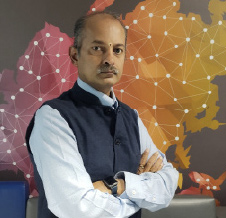
India's telecom infrastructure has witnessed remarkable growth, with the total Base Transceiver Station (BTS) count reaching 2.943 million as of November 2024, announced Communications Minister Jyotiraditya Scindia. This marks a significant leap from 649,000 BTS in March 2014. Additionally, India’s mobile subscriber base grew from 904.5 million in March 2014 to 1.1638 billion by August 2024, while internet subscribers surged from 251.5 million to 969.6 million between March 2014 and June 2024.
The country’s 5G infrastructure has also expanded rapidly, with over 460,000 5G BTS deployed, driven largely by Airtel and Jio. This rapid rollout reflects India's ambition to lead in next-generation connectivity.
Efforts to enhance rural connectivity are gaining momentum. By September 2024, 622,840 out of 644,131 villages had mobile network coverage. To bridge the remaining gaps, the government launched the 4G Saturation Project with a budget of Rs 30,620 crore, aiming to deploy 17,901 new BTS across underserved areas.
Further bolstering rural internet access, the BharatNet program, now managed by Bharat Sanchar Nigam Limited (BSNL) after its merger with Bharat Broadband Network Limited (BBNL), has been allocated Rs 1.39 lakh crore for enhancing high-speed broadband in villages.
Projects such as connectivity initiatives in aspirational districts and the Left-Wing Extremism (LWE) Phase-2 program are also part of the government’s broader push to make connectivity accessible to all. The Universal Service Obligation Fund, now renamed Digital Bharat Nidhi (DBN), remains pivotal in financing these efforts.
This multi-faceted strategy underscores India's commitment to achieving digital inclusivity and enhancing telecom infrastructure nationwide.
See What’s Next in Tech With the Fast Forward Newsletter
Tweets From @varindiamag
Nothing to see here - yet
When they Tweet, their Tweets will show up here.





























